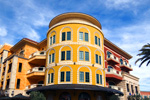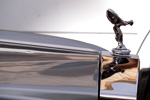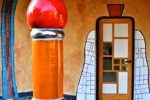Lytro Camera: A High Tech One-trick Pony
New breakthroughs in technology usually lead to new products that are better performing, easier to use, and cost less. On occasion they don't. Case in point, the new Lytro Light Field Camera, a camera built on a revolutionary new camera technology that takes a huge leap backward in digital camera performance.
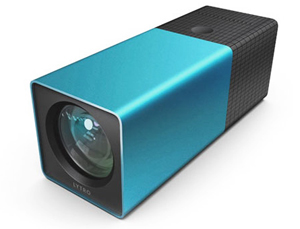 |
Yes, it's true. The newly released Lytro Light Field Camera uses an all-new image capture technology that, as the Lytro website claims, "gives you capabilities you've never had in a regular camera." That much is true. What is left unsaid is that the Lytro also takes away most of the capabilities that have been standard fare in digital cameras for the last decade. For $399 (or $499 for the model with extra onboard memory), the Lytro gives you lower resolution pictures than your cellphone. It gives you no control over exposure, and not much ability to crop or edit your pictures after the fact. It has no flash, so you can't use it to photograph your friends at a party. It has a tiny, dim screen that is hard to see in daylight. And while almost all of today's $400 digital cameras can shoot high definition 1080p movies, the Lytro has no video capability at all.
So what does the Lytro do?
The Lytro camera does one unique thing: It can allow you to dynamically refocus the photo after the fact on your computer. If you have taken a picture with one object in the close foreground and another in the background, you can click each of these areas of the picture to switch the focal point back and forth between the two. The Lytro folks call these "living pictures." No other camera on earth can do this. And for people who get excited about the concept, the Lytro may open up a new avenue of creative experimentation.
Here is what a Lytro living picture looks like:

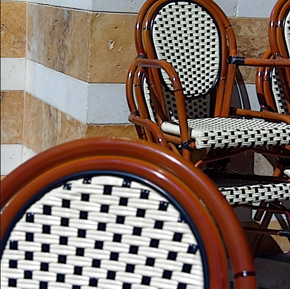
These two images are from one Lytro photograph. On the left, we clicked the
chair in the foreground to put it in focus; the background is out of focus. On the right,
we clicked the wall to put it in focus, causing the foreground chair to go out of focus.
Changing the area of focus also alters contrast and color saturation.
What makes this a "living picture" is that you can click back and forth to your heart's content, changing the focal point in each image any time you want, as long as the photo is hosted on and driven by the Lytro servers. If you convert them to jpegs, the ability to refocus goes away and you end up with a static picture.
In order to make this refocusing trick work, you need to compose your picture so that there is an object of interest in the extreme foreground, very close to the camera, and another object of equal interest in the background that is worth focusing on. A good example would be a close-up photo of a friend with Mt. Rushmore in the background. In the living picture you can click back and forth to render either your friend or the monument in focus. Those who get into pushing the creative limits of the Lytro medium will attempt to place multiple objects at varying distances from the camera, in order to create several different focal points in a single image.
There are practical limits to this--the farther away the foreground object is from the lens, the more subtle (and less interesting) the refocusing becomes. So having one object extremely close to the lens is vital for best results. And also keep in mind that everything beyond about ten feet from the camera is in the infinity focal zone. That means it is impossible to refocus between two objects that are both farther away than ten feet. So this "living picture" concept is exclusively about extreme close-ups and foreground composition.
What's hot about the Lytro:
- New imaging technology unlike anything in the world of digital cameras
- Cool high tech design that looks nothing like a camera--people will ask you, "What's that?"
- Simple design, no confusing knobs and controls, just a shutter button, a zoom slider, and an on/off switch
- Lets you refocus some pictures after the fact if the pictures are properly composed to take advantage of the "living picture" feature.
- An 8x zoom range--better than many point and shoots.
What's not so hot about the Lytro:
- "Living picture" compositions must be carefully staged.
- Square picture format--the worst format for the type of compositions the Lytro is best at. Many times, if you want objects in the foreground, middle-distance and far distance, it would help to have a rectangle rather than a square to work with.
- Extremely tiny viewing screen, slightly larger than a postage stamp. The screen is difficult (almost impossible) to see in sunlight or off-angle. This is the camera's single greatest design flaw; when you can't see what the camera is looking at you have no control over composition.
- Very slow to obtain focus in creative mode.
- Will not autofocus reliably in low to moderate ambient light
- Creative mode gives greater control over depth of field, but you must manually tap the screen to tell it where to focus. Not what you expect from a camera that claims to eliminate the worry of focus from the process.
- In Creative mode, tapping the screen will sometimes not activate the autofocus mechanism. When this happens it will take an out-of-focus picture that cannot be fixed after the fact.
- Pictures convert from the "living" format to standard jpegs at 1080x1080 resolution, a mere 1.2 megapixels. That's fine for Facebook but not much else.
- Clumsy ergonomic design: holding the tube-like body pointed at your subject while having to tap the screen to focus on a particular element in the scene is not a comfortable procedure.
- Soft images, especially of distance subjects. Don't shoot landscapes with this camera.
- No cropping or editing of "living" photos. Whatever is in the square is what you get.
- Aperture is fixed at a constant wide open f/2, which minimizes depth of field at any given focal distance. On the positive side, shallow depth of field in every Lytro photo exaggerates the effects of refocusing at different points in the image. A normal camera will allow much smaller apertures, and accordingly much greater depth of field. On the Lytro you can choose which area of the photo you want to be in focus. A normal camera will often allow you to put the whole image in focus at once.
- Another big downside for many users will be that they MUST use Lytro's server to share "living" photos. Unlike standard jpegs, every Lytro living picture you share on Facebook is hosted by Lytro, and functions as an advertisement for Lytro.
- The refocusing feature is gimmicky, and many users will soon lose interest after playing with it a while.
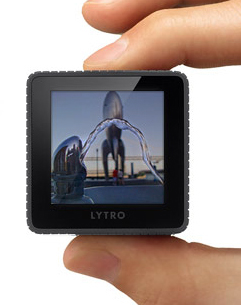 |
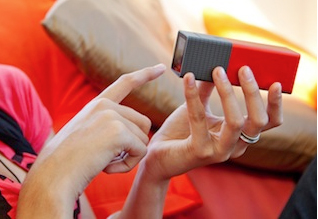 |
The Verdict
With a normal camera, you visualize the images you want to take, and you manipulate the camera to make it do what you want it to do. With the Lytro, the camera manipulates the user, forcing you to compose your photos in a restrictive format that shows off the Lytro's refocusing gimmick to its best advantage. After you and your friends have been suitably amused with this trick there is nothing more to be done with it. You end up with a camera that in all other respects is well below industry standards in resolution, usability, and features.
As a prototype demo of a new image capture technology, the Lytro is an intriguing device. The refocusing gimmick is fun when you first see it. If you want to explore the medium of Lytro's "living pictures" as a fun art form, and spend your time creating compositions that best show off the Lytro technology, the camera might be worth $400 to you. But be aware that once you lose interest in the process of composing a successful living picture, the Lytro has absolutely nothing else to offer.
Most budding creative photographers with $400 to spend will be much better off trying one of the amazing new superzoom cameras, or even stepping into a bargain-priced mirrorless camera. These cameras stand head and shoulders above the Lytro in picture quality, creative flexibility, image resolution, video capability, and other features.

